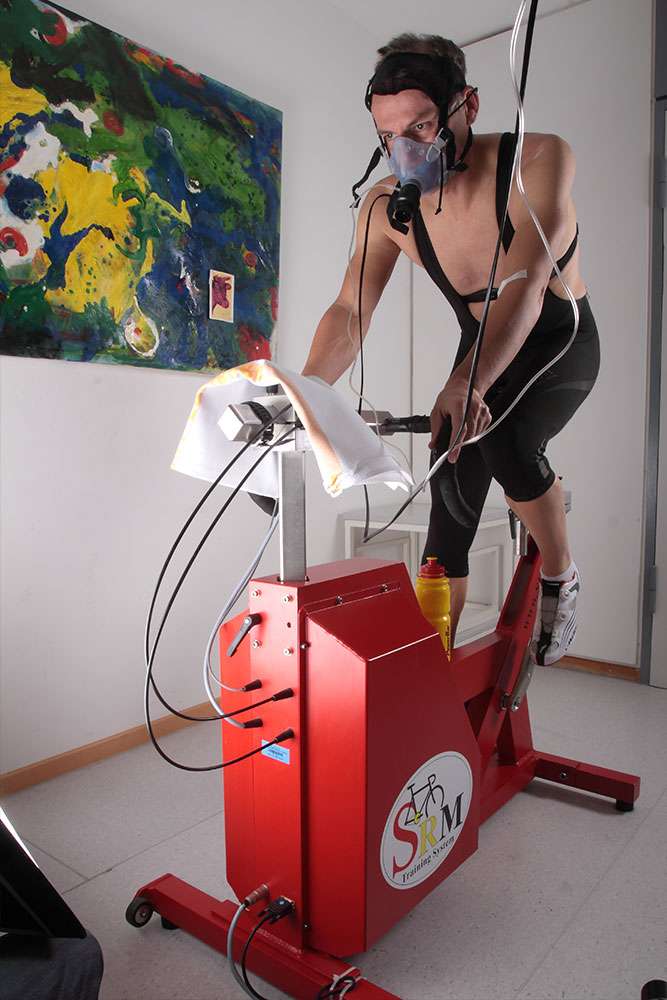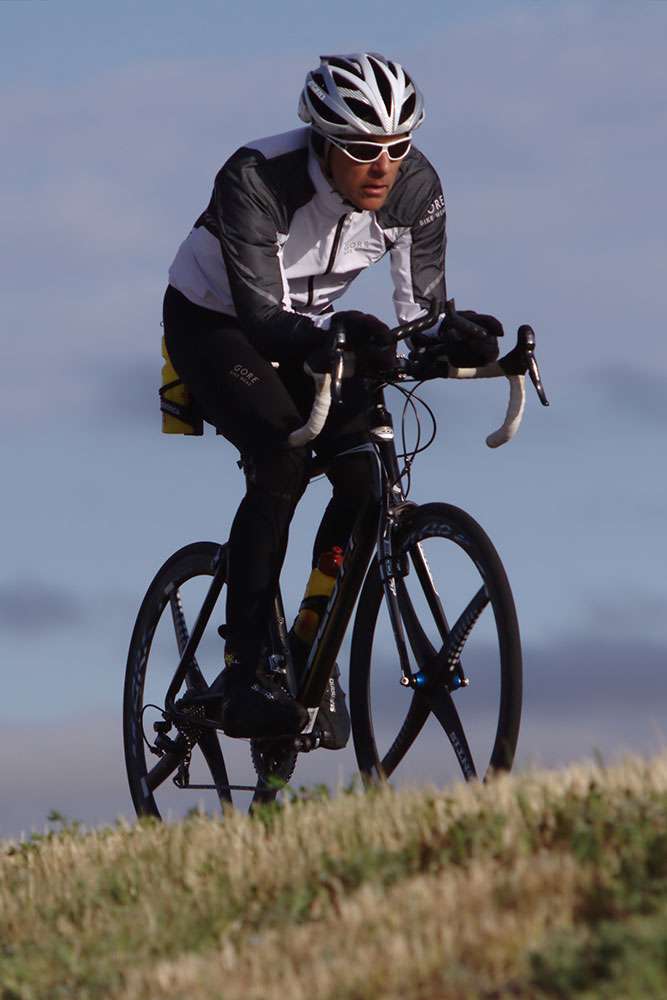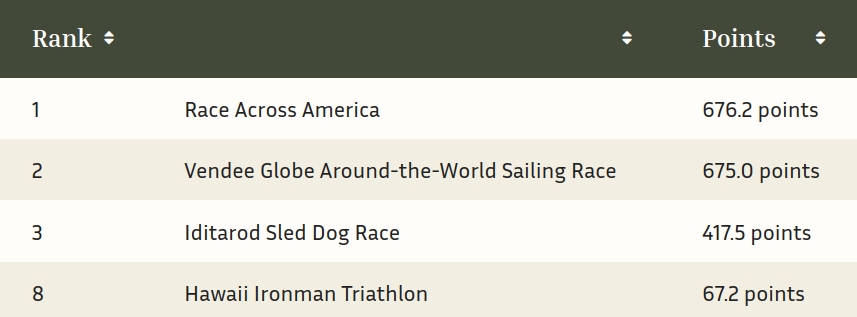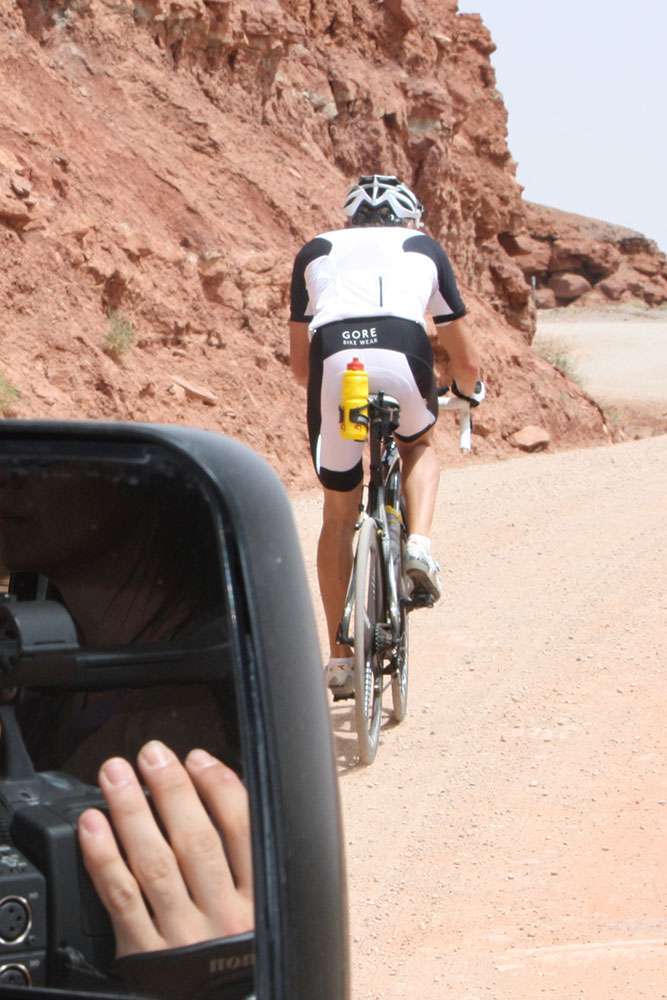Michael Nehls
Race Across America
In 1982, four men had an athletic vision: to cross the United States from coast to coast on a road bike in the shortest possible time. The Race Across America (RAAM) was born. Since then, the race has started every year at the Pacific Ocean. The goal is to reach the finish line on the other side of the continent, at the Atlantic Ocean, after approximately 4830 kilometers. Click here for the Click here for the official RAAM website…
There is hardly a more demanding sporting challenge for the body and especially for the mind. To reach the finish line in the twelve days allotted to them, participants must cover more than 400 kilometers a day, alone. This is roughly the equivalent of three Tour de France stages per day.
The classic race strategy in the world’s longest single stage time trial: Ride until you are totally exhausted, take a short nap, and then get right back on the bike. Many riders sleep only 8-10 hours during the total race, i.e. less than one hour a day. Micro-sleep and paranoid attacks are the norm, and only about half of the racers reach the finish line.
A panel of experts from Outside magazine ranked RAAM as the toughest endurance race in the world based on the following criteria:
- The length of the race
- The hardness of the course
- The mental agony factor
- The ratio of effort to the DNF (Did Not Finish) rate


According to these criteria, the ranking was as follows:

It follows: Doing an Ironman in Hawaii non-stop ten times in a row would be pretty close to the RAAM challenge.
However, RAAM is not for masochists, despite what many mistakenly believe. A masochist would fail after a few days by ignoring the body’s warning signals. This would inevitably lead to physical suffering that the mind would not be able to handle.
The supposed simplicity of the race turns into a complex challenge due to its length, which tests all (character) qualities of the driver and his support team and is like life in fast motion. The smallest mistakes are quickly and mercilessly punished!
Since the body follows the mind, participating in RAAM for me is first and foremost a mental exercise with the all-important question:
Which motives will bring me to the goal, which ones would make me fail?
Here you will find the answer(s)
Unfortunately my Book “Race Across America Challenge” is not available in english yet, but if you register for our SUBSTACK CHANNEL you will get notified as soon as we have them translated and published.
My way to the Race Across America (RAAM)
After winning the Freiburg Marathon in 1984, I ended my early athletic career and concentrated on my professional career as a scientist.
18 years later, with 20 kilos overweight, I made a new start in terms of exercise and participated in the Dolomite Marathon in 2002. A year later at the Ötztaler Radmarathon.
Soon I was looking for new challenges. I wanted to go further, not faster. I didn’t want to torture myself, I wanted to meditate and enjoy nature. That’s how I found my way to the Race Across America (RAAM).
June 2005:
RAAM qualification in Wiedlisbach/Switzerland
(734 kilometers and 6000 vertical meters in 26 hours and 34 minutes)
September 2005:
12-hour individual time trial on the Hockenheimring (400.5 kilometers)
Year 2006:
Two cycling accidents through no fault of my own, each resulting in several broken bones
June 2007:
Race Across The Alps
(RATA: 525 kilometers and 13,600 vertical meters in 28 hours and 35 minutes)
August 2007:
24-hour time trial Rad am Ring
(588 kilometers and 12500 vertical meters)
1st place out of 80 in the Master class
June 2008:
Race Across America
(4,830 kilometers with 30,000 vertical meters in just under 11 days)


Just under 11 days was exactly four minutes under my self-imposed goal. And that without sleep deprivation. On the contrary, I set a new record: I became the finisher with the most total sleep time in RAAM history! My completely unusual race strategy worked, I finished 7th out of 27. I wrote a book about it and the University of Freiburg published a scientific article about it.
September 2009:
European ultra-distance championship in Switzerland
(716 kilometers with 6000 vertical meters in 23 hours and 56 minutes. 4th place out of 73 starters).
June 2010:
In addition to my wife, our children also took part in my second Race Across America as support staff. As filmers, drivers and physiotherapists. Again, I reached the finish line with plenty of sleep.
The documentary about it: “You need no victory to win” was a great success.
The background of my RAAM successes is also applicable to a healthy lifestyle in general and other essential aspects of normal life. I have summarized them in the book “The Methusalem Strategy”.
In the spring 2011, my wife and I climbed the “white roof” of Africa, Mount Kilimanjaro in Tanzania. The exciting and informative documentary “Summit of Freedom” was released in the fall of 2011.

